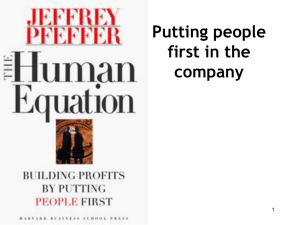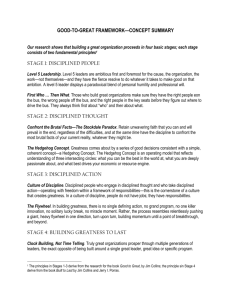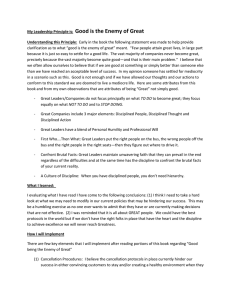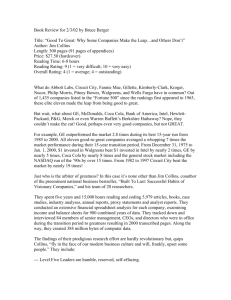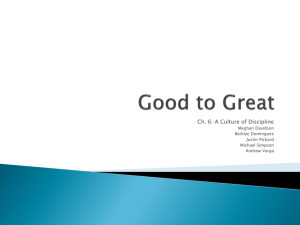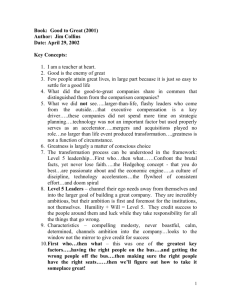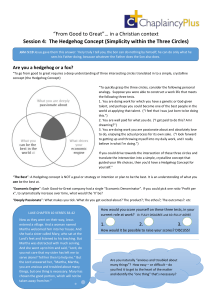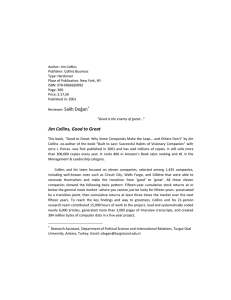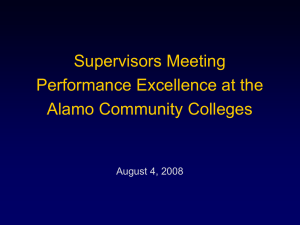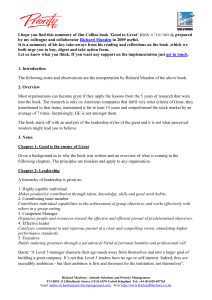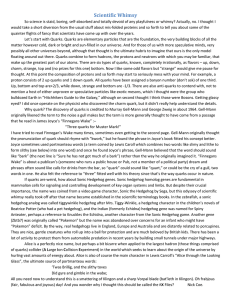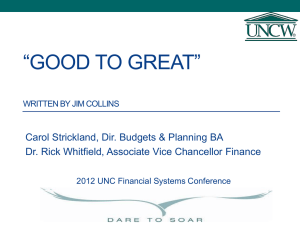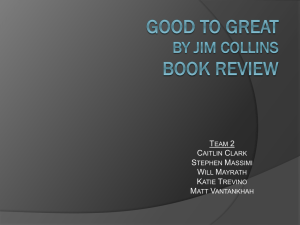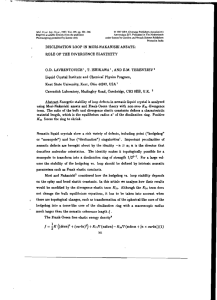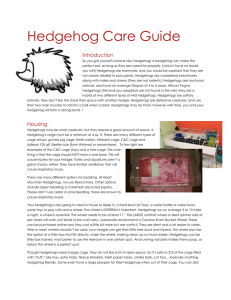Good to Great - Cloudfront.net
advertisement
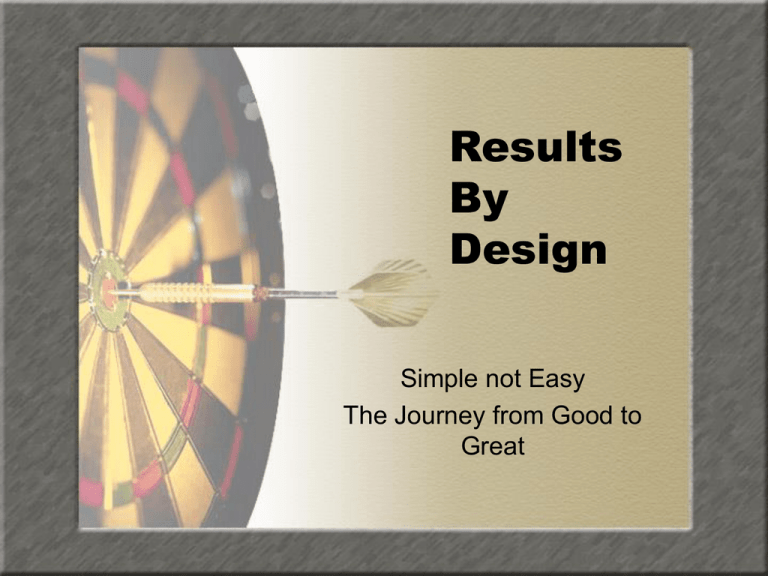
Results By Design Simple not Easy The Journey from Good to Great Getting Student Results is Simple, Just not Easy… All you have to do is: – Find out what kids know – Find out what kids do not know – Do something(teach them) about what they do not know What are the Simple Things We Need to Do? All we have to do is: – Apply Good to Great – Plan, Teach and Assess at the Student Expectation Level ( the SEL) of the TEKS – This is another way to say we are focused on deep alignment between the written, taught, and tested curriculum – Lead for deep implementation Good to Great Study • Companies selected for study had stock returns 6.9 times higher than general market • Then, the company had to have 15-year cumulative stock returns at or below general market, but • Definite transition point where they were 3 times over the market over the next 15 years Good-to Great Companies • • • • • • Abbott Circuit City Fannie Mae Gillette Kimberly-Clark Kroger • • • • • Nucor Philip Morris Pitney Bowes Walgreens Wells Fargo Comparison Companies • Collins compared Great companies to similar companies who failed to make the leap to greatness • His researchers identified what was unique to the Great Companies and what was missing in the comparison companies • The “what was missing” formed the foundation principles of Good to Great Foundation Principles • Flywheel Effect • Culture of Discipline • First Who, then What • Confront the Brutal Facts (Stockdale Paradox) • Hedgehog Concept 2 Key Principles from our Experience • Culture of Discipline—Leadership • Hedgehog Concept—At what will we be the best in the world? Culture of Discipline • Stage I—Disciplined People • Stage II—Disciplined Thought • Stage III—Disciplined Action Levels of Leadership • • • • • Level 5 Executive Level 4 Effective Leader Level 3 Competent Manager Level 2 Competent Manager Level 1 Highly Capable Individual Leading a District-Wide Implementation • Ambitious for the organization • Ferocious will to make it happen Hedgehog Concept • What are you passionate about? • What can you do better than anyone else in the world? • How do you deploy your resources to support what the research says has the greatest impact on student achievement? In Suburban ISD, we believed that: • We would be the best in the world at using data to drive instruction. • We cannot be all things to all people, but we can focus on the learning and make informed decisions about what the learners know and do not know. The Results Equation R=L+D+A • Leadership • Data • Action Leadership • • • • • Build the Case Determine Your Targets Set Standards of Quality Announce Plan for Accountability Give Energy to the Initiative Building the Case • Determine the audience • Differentiate the message as needed • Consult the research (internal and external) to support the job as “doable” • Articulate the student benefits • Make connections to personal mission (why teachers teach) • Make connections to organizational mission (why our school exists) Determine Your Targets • Create plans to build your case to the appropriate audience in a frequent and consistent manner • Create plans to keep the case focused and on everyone’s radar screen Set Standards of Quality • Determine measures to be used to document success along the way • Search for early examples of success and hold up these staff members as positive examples Give Energy to the Initiative • Talk about it …Talk about it…Talk about it…-Never let your team forget that it is a priority to you as a leader • Identify your current group of champions for this initiative • Delegate responsibility to other leaders to monitor and intervene where appropriate • Recognize your trendsetters and determine the best practices that have contributed to his/her success • Standardize the implementation of these practices Data↔Action Continuum • Do we take action without considering the data? • Do we take action with a cursory understanding of the data? • Do we take action that is driven by the data? • Do we differentiate our actions based on the data? Data and Action • Set the Stage with Leadership • Data Analysis at Every Level of the Organization • Data Married to Action • Interventions – Student – Teacher Data Meeting • Analysis using the Assessment Reports • What does the data mean? • What are the leadership implications? • What interventions will be established? Results By Design Simple not Easy The Journey from Good to Great
